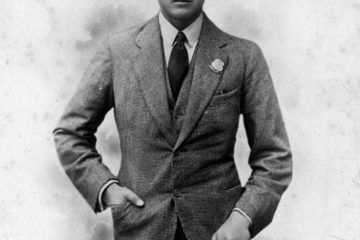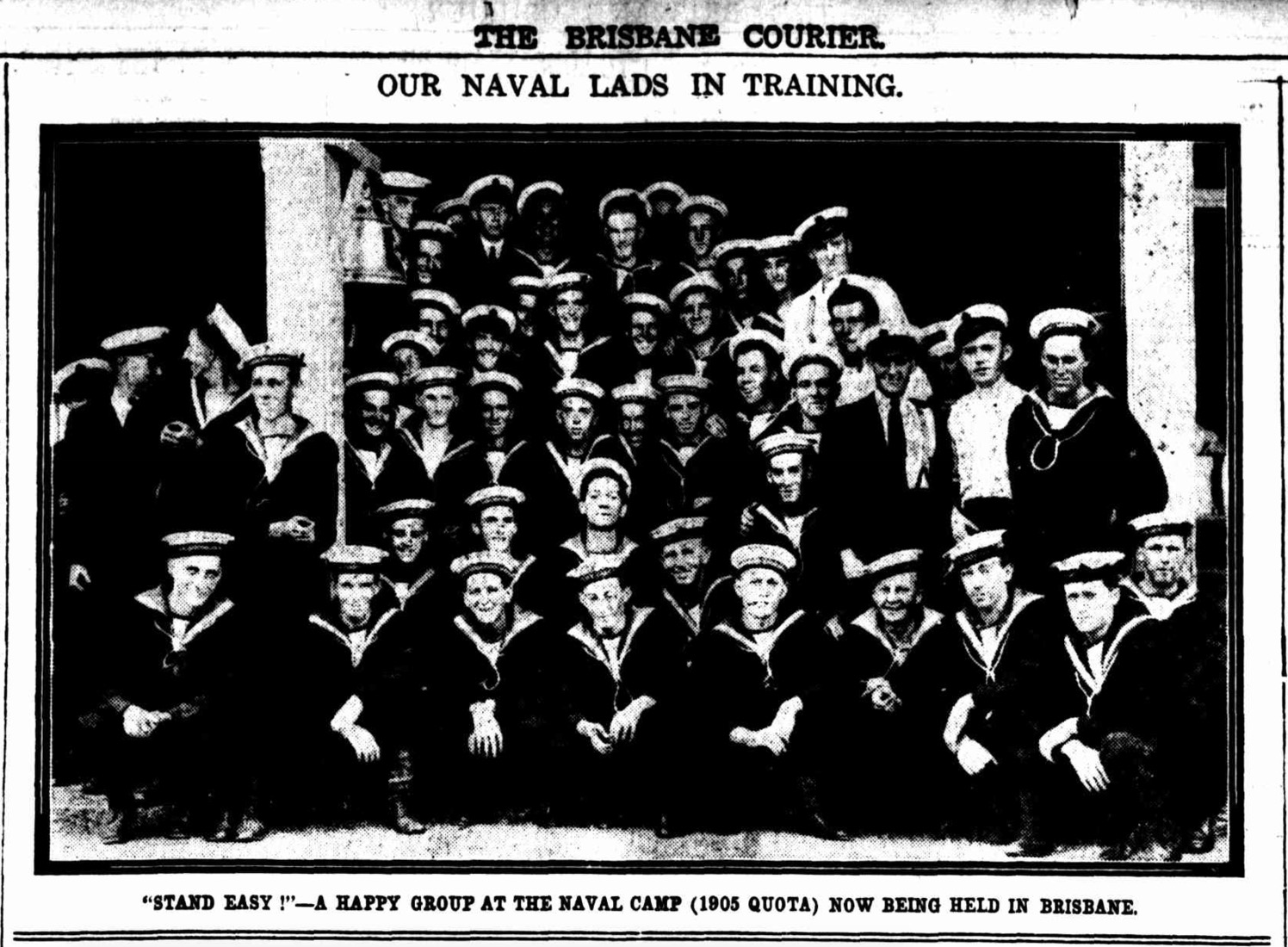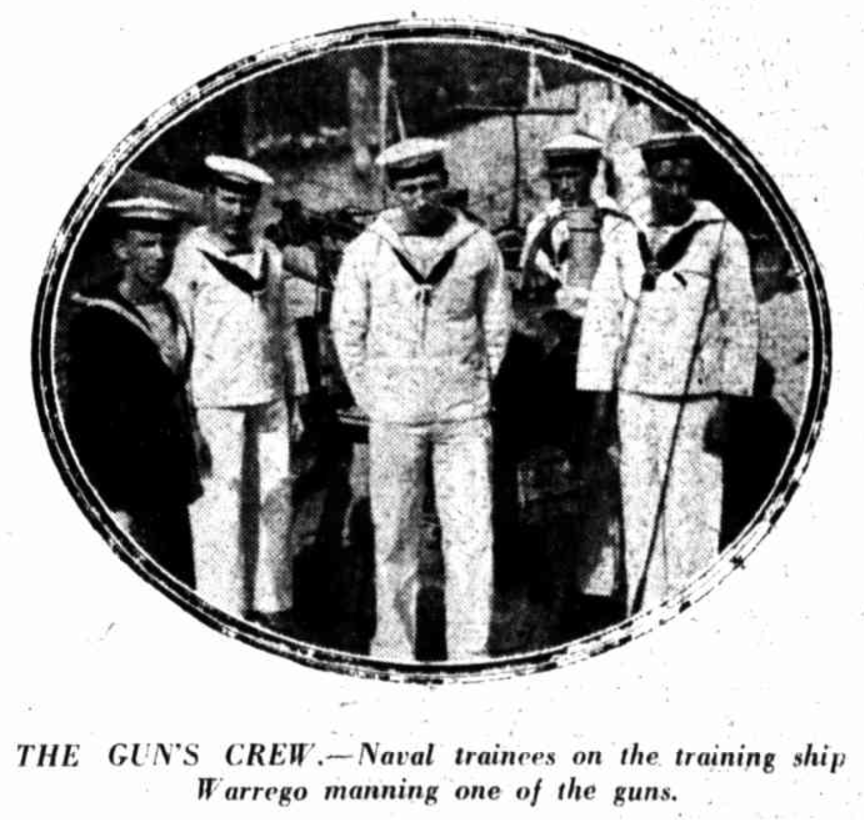On a war footing in 1939

ABOVE: HMAS Sydney (II) – D48, with its first disruptive camouflage paint scheme, pictured in the latter part of 1940.
Navy’s War Plan Ready 20 Years:
SILENT SERVICE AT SEA
FROM time to time sleek grey ships slip unobtrusively into Australian ports.
More instructions from land bases, all available data are checked and revised. Then to sea again. Perhaps for a day. Sometimes for an unbroken month. The Royal Australian Navy is at work.
When the Prime Minister (Mr. Menzies) [ Robert Gordon Menzies ] declared that Australia was at war with Germany he automatically set into action a plan which had been in readiness for such an emergency since 1919.
No hurried conferences were necessary to discuss naval defence. Years of meticulous planning had catered for this time, and within an hour of the Prime Minister’s statement units of the Royal Australian Navy had put to sea with full knowledge of the job in hand.
Australia has a short, but striking, naval history. Conceived in 1890, the building of the first units for our fleet began in 1910.
Crews were trained, and in September of that year the first two units of the Australian fleet were commissioned.
These were two torpedo boat destroyers, Parramatta and Yarra, and were quickly followed by the destroyers Warrego, Torrens, Swan, Derwent, the battle cruiser, Australia, three smaller cruisers, the Brisbane, Sydney, and Melbourne, and two submarines, AE1 and AE2.
Australia also had the use of the cruisers Encounter and Pioneer from the Royal Navy.
WITHIN four years of its birth the R.A.N. was called upon for active service.
In a Commonwealth record, published in 1927, appears the cryptic reference: “The vessels of the Australian Navy are participating in the European War. Both submarines have been lost.”
After the war, care was taken that Australia’s Navy should derive full value from the price paid in the lives of men and ships.
When war came two months ago the peace-time strength of the Navy began its long job.
Cruisers and destroyers initiated a relentless patrol of all the main shipping lanes in Australian waters.
A ceaseless vigil has been, and will be, maintained to guard Australia’s 800 merchantmen and Allied vessels from overseas.
Sometimes the work takes units far from the Australian coast.
Then came swift measures to forge strong links in the chain of naval defence.
From the list of naval reserves, which had been built up over a period of many years, officers and ratings were summoned for immediate duty.
These men were ready, because, in the years away from the sea, they had attended parades, instructional classes, and trained in ships and shore establishments at regular intervals.
Fast, modern merchant vessels were acquired, rigged with guns, and manned by naval reserves.
Some are already at sea on patrol work. Local ships have been converted for use as escort vessels and minesweepers.
On land there has been us much activity as at sea. More naval reserves were called up, and sent to signal stations covering the entire coastline.
Their job is to keep all friendly shipping advised and report on the movements of all ships in their areas.
At all ports signal station officers contact shipping approaching the harbour, and examiners establish definitely the identity of any vessel desiring to enter port.
The Navy has taken complete control of Australia’s merchant service. At each port masters must contact the Naval Control Service, which is responsible for the implementing of war precaution measures.
Individual courses are plotted for every merchantman, who is also equipped with every emergency regulation.
A complete plan is ready for the introduction of the convoy system if, at any time, it is deemed preferable.
This step will be taken only if an attack is expected so that present schedules will not be slowed down.
If German raiders or pocket battleships come to Australia, the Navy is prepared. German ships of the Deutschland class are heavier, and have a longer gun-range than our largest cruisers, but they are no faster.
It is considered that two Australian cruisers would be unfortunate if they did not have the better of an encounter with a pocket battleship.
In Brisbane, 400 naval reserves have been called up since the outbreak of war.
The strength of the Brisbane division is about 600 officers and men, and those who have not been mobilised have been advised to await further instructions.
About 200 men were already trained, and were sent straight to their war stations at sea and on land.
The balance of 200 men underwent a period of three weeks’ intensive training at the Alice Street depot.
Some were then sent to ships, and special classes were drafted to the Flinders Naval Depot, Victoria, for fuller training as gunners and signallers.
Now most of them are ready to take over in armed merchant ships, or Navy units.
Thousands of applications were received in Brisbane, but as yet most of the men attested for service at home or abroad are ex-naval or ex-merchant men.
Men with merchant experience, either as seamen or firemen, and under the age of 35, are still needed.
The few new recruits that have been accepted here are about 18 years old, and have been trained at the local depot, or sent to southern establishments for a month before joining ships.
Rates of pay in the Navy to-day are: Ordinary Seamen, 4/- a day; Able Seamen, 7/- ; petty officer, 9/6 ; Chief Petty Officer, 10/6. Ordinary Signalmen and Telegraphists receive 4/- a day; Signalmen, 7/3; Yeoman of Signals, 10/- ; Chief Yeoman of Signals, 11/- ; Petty Officer Telegraphist, 10/- ; and Chief Petty Officer Telegraphist, 11/-. Each man is also allowed the additional payments of 7½d. to 8½d. a day for kit upkeep allowance, 2/- marriage allowance, and 9d. for each child.

ABOVE: Extracted from the front page of 15 December 1927 issue of “Table Talk”, a Melbourne periodical, is this photo of Ernest Clifford Rhodes. The caption reads: “Lieut.-Commander Ernest Clifford Rhodes and his bride, Kathleen Ursula Morton, the only daughter of Dr. and Mrs Murray Morton, of “Waitemata”, Queen’s Road, Melbourne. This picture was taken in the garden at “Waitemata” last Wednesday Afternoon. December 7, after the wedding ceremony, which took place in the large ballroom in the presence of many of our best known people.”
CONTROLLER of the Brisbane division of the District Naval Office is a man who has learned everything he knows about ships the hard way.
Commander Ernest Clifford Rhodes was before the mast for three years in the sailing ship Inverness, joined the R.A.N. in 1913, and served with the 10th Cruiser Squadron and H.M.A.S. Melbourne during the war.
He thinks that the R.A.N. is immeasurably stronger now than in the last war.
“Perhaps the number of ships does not reflect such an assuring margin,” he said yesterday, “but there are two overriding factors which prove that the Australian Navy has a strong grip on the coast.
“The first is that the men behind our guns have been trained for their jobs, and will not fail.
“The second, and perhaps more important, is that close co-operation is being maintained with the Royal Australian Air Force in all phases of our work.
“We have had hundreds of reports from civilians who say that they have seen or heard of submarines and mystery ships on the coast, but investigation has proved that none could be substantiated.”
His parting shot: “An enemy ship of any kind would experience a torrid time if she ever tried to get up to Brisbane. We are ready.”
– from page 4 of “The Courier-Mail” (Brisbane) of Wednesday, 1 November 1939.

ABOVE: From the Australian War Memorial Collection comes this group portrait of officers aboard HMAS Melbourne. Identified, from left to right are (back row): Engineer Lieutenant Howell; Warrant Mechanician John Vincent Corigliano; Warrant Shipwright Watson; Gunner Arthur Brown; Assistant Paymaster James Dunlop Jackson; Lieutenant George Dunbar Moore; Lieutenant Ritchie; Lieutenant Ernest Clifford Rhodes; Temporary Surgeon John Smith; Artificer Engineer Carl Rankins Reid; Gunner (T) Frederick Bolt; Gunner Harold Blomfield Hatton. Second row: Chaplain Andrew O. Hardie; Surgeon William James Carr; Lieutenant Kenneth Harry Litton MacKenzie; Acting Commander Ernest Richardson Gloag; Captain Edward Astley Rushton, with the ship’s pet or mascot cat on his lap; Engineer Commander Gerald Moore; Paymaster Leslie Sutton Brown; Lieutenant Reginald Charles (or Herbert Victor?) Creer; Lieutenant Louis Claude Rowland.Front row: Temporary Midshipman Geoffrey Edward Shaw, Royal Australian Navy Reserve (RANR); Paymaster’s Clerk Alexander David Cravino; Temporary Midshipman George McRimmon Munro, RANR. The motto behind the group reads Fear God and Honour the King.


